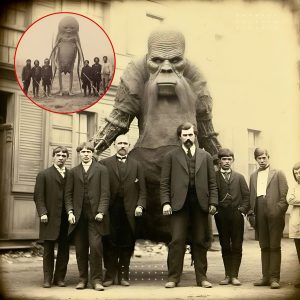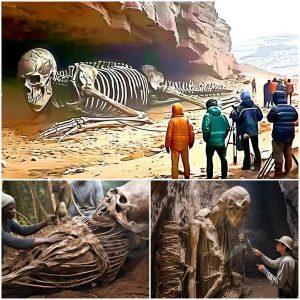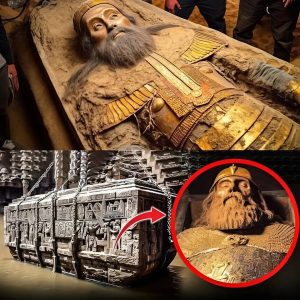Sunday 26th August marks the 100th anniversary of the devastating floods which hit the region. I’ve covered the event being held to mark the centenary by the Bure Navigation Conservation Trust at Coltishall this weekend and the effects of the flood on that section of the Upper Bure in previous blog posts, but I thought I’d share a few of the old postcards which were produced at the time showing the aftermath of the floods.
Most of these images can already be found within the postcards section of the Broadland Memories website but I thought it relevant to re-publish a selection here. There had been rain over several days prior to the storm but it began raining heavily in the early hours of Monday 26th August 1912 and in less than 24 hours over 8” had fallen over the region. The accompanying gales ensured that the tide remained high and, as the water poured off of the land, the rivers were breached in many places causing mass flooding across Norfolk and Suffolk. Over 40 bridges were destroyed, railways became blocked and the harvest was lost. A number of lives were lost and thousands more were left homeless as the flood water swept through the region. Because of it’s high population, Norwich was one of the worst hit areas. Numerous photographs were taken throughout the city at the time and were subsequently issued as postcards, so it’s here that I begin the photo gallery.
 The first postcard shows a very animated scene in Prince of Wales Road.
The first postcard shows a very animated scene in Prince of Wales Road.
 It is said that the flood water in Norwich rose to over 15 feet above the normal high tide level and that Carrow Road (pictured above) resembled a canal. Power and communications in the city were cut and Norwich effectively became cut off from the outside world for a few days until the water began to recede.
It is said that the flood water in Norwich rose to over 15 feet above the normal high tide level and that Carrow Road (pictured above) resembled a canal. Power and communications in the city were cut and Norwich effectively became cut off from the outside world for a few days until the water began to recede.
 The flooding in Magdalen Street pictured on August 27th 1912. As the water levels rose the sewers became blocked and the floodwater had nowhere to go, a problem made worse by the fact that the gullies in the streets became blocked by debris.
The flooding in Magdalen Street pictured on August 27th 1912. As the water levels rose the sewers became blocked and the floodwater had nowhere to go, a problem made worse by the fact that the gullies in the streets became blocked by debris.
 The heavily populated areas of Heigham, Coslany and Westwick were the worst affected areas of the city – they were also the poorest districts and over 3,500 homes were flooded with 15,000 people being affected, 2000 of whom were left homeless. The YMCA in Norwich took in 280 people who had been evacuated from their homes, many more were housed temporarily in local schools. The postcard above shows Exeter Street, the terraced houses seen here no longer exist.
The heavily populated areas of Heigham, Coslany and Westwick were the worst affected areas of the city – they were also the poorest districts and over 3,500 homes were flooded with 15,000 people being affected, 2000 of whom were left homeless. The YMCA in Norwich took in 280 people who had been evacuated from their homes, many more were housed temporarily in local schools. The postcard above shows Exeter Street, the terraced houses seen here no longer exist.
 The printing works of the Norwich Mercury on Bridge Street were destroyed as the Wensum became a raging torrent. The works stood on the riverside near to St. Miles Cosalny Bridge. Four people lost their lives in Norwich, including fish porter George Brodie who was one of the many heroic people who attempted to rescue those who were trapped in their homes.
The printing works of the Norwich Mercury on Bridge Street were destroyed as the Wensum became a raging torrent. The works stood on the riverside near to St. Miles Cosalny Bridge. Four people lost their lives in Norwich, including fish porter George Brodie who was one of the many heroic people who attempted to rescue those who were trapped in their homes.
 For those who remained in their homes, food and other supplies were delivered by boat or horse and cart. Local postcard collector Tony Williamson contacted me recently to identify the location seen above as Lothian Street with Cushions woodyard (still trading there) seen on the right. He also said that this particular image of the floods was one of several which were staged for the camera: “Francis Willmott, (a photographer from Muspole St) took a shot just previous to this showing the cottagers, the boatman and Lord Wodehouse who was standing in a few inches of water.“
For those who remained in their homes, food and other supplies were delivered by boat or horse and cart. Local postcard collector Tony Williamson contacted me recently to identify the location seen above as Lothian Street with Cushions woodyard (still trading there) seen on the right. He also said that this particular image of the floods was one of several which were staged for the camera: “Francis Willmott, (a photographer from Muspole St) took a shot just previous to this showing the cottagers, the boatman and Lord Wodehouse who was standing in a few inches of water.“
 Trowse Bridge was one of the many bridges in the region which were destroyed or damaged in the 1912 floods. The bridge was rebuilt in the following year.
Trowse Bridge was one of the many bridges in the region which were destroyed or damaged in the 1912 floods. The bridge was rebuilt in the following year.
 The road bridge which crossed the River Yare at Lakenham was also destroyed.
The road bridge which crossed the River Yare at Lakenham was also destroyed.
 Villages along the Yare were affected too as the river burst its banks. This particular postcard shows a train crossing the flooded marshes at Cantley. What’s interesting is that this is actually dated as being October 1912 – is the date right ….. or did the floodwater really take this long to subside?
Villages along the Yare were affected too as the river burst its banks. This particular postcard shows a train crossing the flooded marshes at Cantley. What’s interesting is that this is actually dated as being October 1912 – is the date right ….. or did the floodwater really take this long to subside?
 The first of two photographs of the aftermath of the floods at Beccles, captioned as showing Gillingham Dam on August 28th 2012.
The first of two photographs of the aftermath of the floods at Beccles, captioned as showing Gillingham Dam on August 28th 2012.
 Another image of the floodwater in Beccles, photographed in Bridge Street. A contemporary account of the floods in Beccles can be found on the Foxearth Local History Society website.
Another image of the floodwater in Beccles, photographed in Bridge Street. A contemporary account of the floods in Beccles can be found on the Foxearth Local History Society website.
 Further upstream, this birds eye view of Bungay appears to have been taken from the top of the tower of St. Mary’s Church, looking out across Trinity Street to the River Waveney and surrounding countryside.
Further upstream, this birds eye view of Bungay appears to have been taken from the top of the tower of St. Mary’s Church, looking out across Trinity Street to the River Waveney and surrounding countryside.
 Moving to the River Bure, this is the first image which comes by courtesy of the Norfolk County Council Library & Information Service and shows Horning Ferry Inn.
Moving to the River Bure, this is the first image which comes by courtesy of the Norfolk County Council Library & Information Service and shows Horning Ferry Inn.
 Further upstream, the deluge caused considerable damage. Huge amounts of debris was carried down the Upper Bure and the lock at Buxton collapsed, causing an even greater surge of water which also destroyed the road bridge at Coltishall (seen above). The resulting damage was catastrophic for the Aylsham Navigation, the Commissioners were unable to fund the estimated £4,000 repair costs, and the navigation was closed. The County Council’s Picture Norfolk archive contains many more images of the 1912 floods – just type 1912 into the search box.
Further upstream, the deluge caused considerable damage. Huge amounts of debris was carried down the Upper Bure and the lock at Buxton collapsed, causing an even greater surge of water which also destroyed the road bridge at Coltishall (seen above). The resulting damage was catastrophic for the Aylsham Navigation, the Commissioners were unable to fund the estimated £4,000 repair costs, and the navigation was closed. The County Council’s Picture Norfolk archive contains many more images of the 1912 floods – just type 1912 into the search box.
 I’ll finish with what is probably one of the most iconic images of the aftermath of the 1912 floods. It shows the trading wherry Zulu, which was famously trapped above the lock at Buxton, being hauled out and dragged round the damaged lock on rollers before being relaunched below.
I’ll finish with what is probably one of the most iconic images of the aftermath of the 1912 floods. It shows the trading wherry Zulu, which was famously trapped above the lock at Buxton, being hauled out and dragged round the damaged lock on rollers before being relaunched below.





